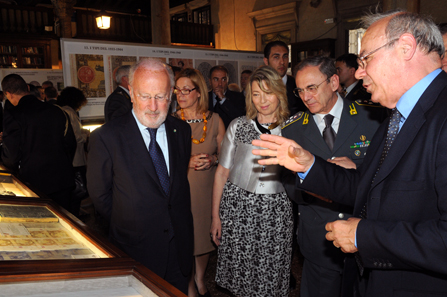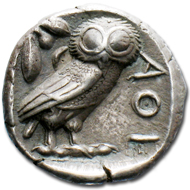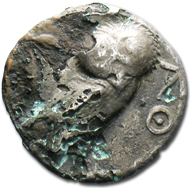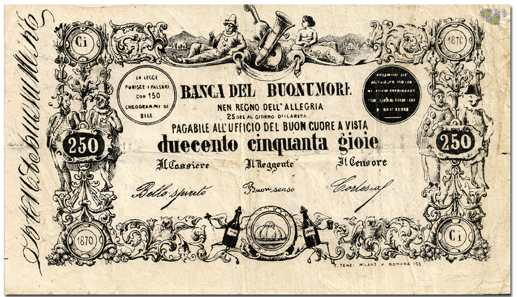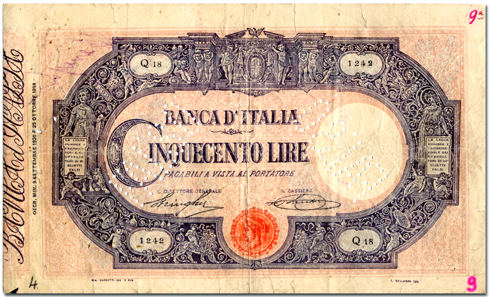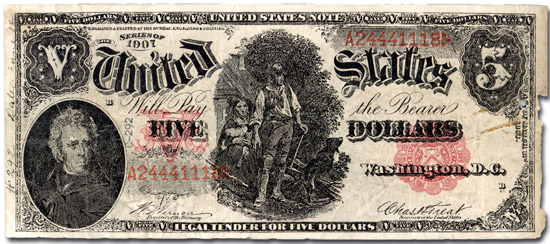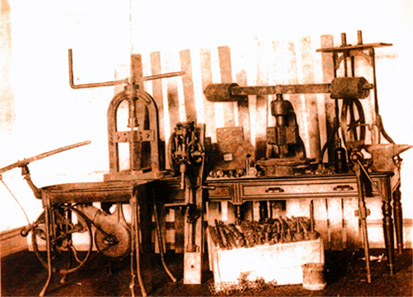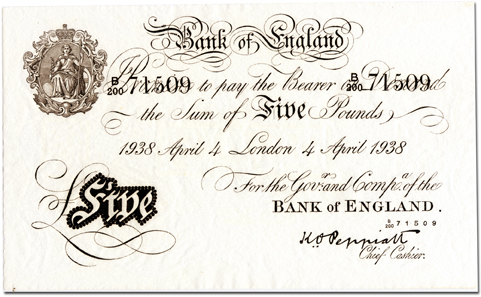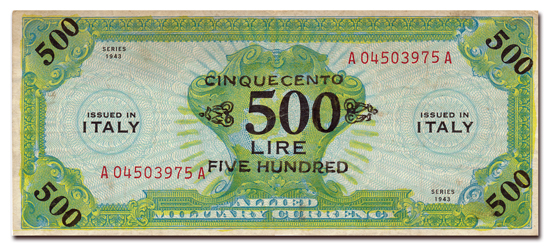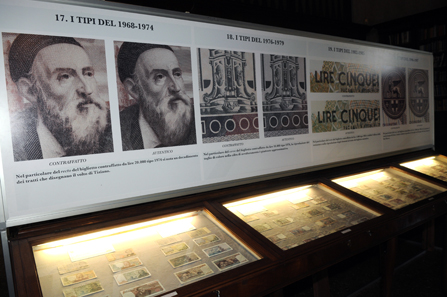by Björn Schöpe
March 14, 2013 – CoinsWeekly is aiming at connecting numismatic activities in different countries. How much this is needed we can see with the exhibition ‘The Real and the False’, the arguably most successful numismatic exhibition ever in Italy – and unfortunately nearly unknown abroad.
This is very sad because, first of all, this exhibition is characterised by an exceptional history and organisation. It was, tellingly, no museum to make up an exhibition with its fakes. Instead this concept originates from the desire to inform about forgeries and came from the Italian financial police, the Guardia di Finanza, an institution with much experience on the field of detecting illegal printing shops and much more. Actually, the visitors would see on display such an authentic printing shop that was found by the police in 2006.
Another point we must underline positively is the productive collaboration between police, museums, antiquities offices, universities, and coin dealers. And that, alas, is not understood automatically. Finally the exhibition is characterised by its very winning concept: it was not a normal touring exhibition, but at each of the twelve stops it was enriched by new items adding another aspect characteristic of the respective region. Now, after five years, this exceptional tour ended in Milan.
To collectors, generally it is synonymous with a nightmare if among their beloved treasures they come upon a forgery they had fallen for. From a cultural historical point of view, though, forgeries offer a particular approach to numismatics not less intriguing since they may contribute as much as genuine pieces to the understanding of the time when they were made. And looking on how many imitations outnumber the genuine coins and banknotes in ‘The Real and the False’ one could get the impression that counterfeits are even much more mesmerising …
Forgeries have been made since money exists. Side by side with very early imitations of coins of Croisus we can see counterfeit Athenian ‘owls’, …
Today the forgery has lost its plating of precious metal and shows (left) its core of base metal in contrast to genuine coins (right).
… or Venetian ducats. Every one of them tells about the striving of people to gain material profit from manipulation of their products’ precious metal content.
Besides this kind of counterfeit there were other kinds too. The exhibition explains how easily the collectors in the first epoch of modern coin collecting fell victims to forgers. In that case is was not the saving on precious metals but the assumed value based on great age or rarity. Since manuals for identifying coins did not yet exist in the sixteenth century, many items a modern collector would recognise as a nice but modern work seemed to be genuinely ancient to collectors of that epoch.
A sestertius of the Roman emperor Caligula – made by Giovanni Cavino.
Hence, an exceptionally die-cutter like Giovanni Cavino (1500-1570) successfully introduced his own work among collectors by simply indicating fictitious finding places – although we are inclined today to judge them rather as being new interpretations and just based on ancient coins.
If you want to learn more about Cavino and his understanding of ‘Real and False’. you can find an extensive article on him here.
And this is exactly the question one is asking oneself all the time in this exhibition: Is this a forgery or not? Coins of less intrinsic value as indicated, nevertheless, distributed officially? Or banknotes that may look to us like a kind of humoristic curiosity although once they almost certainly inflicted heavy damage on many people. These banknotes exploited a weak point of the people in Italy at this time. Because when Italy was becoming a state most Italians were illiterate. And those who could read, generally understood only what was written in their dialect but not in the standardised Italian of the upper class. In this world forgers produced banknotes similar in their appearance to the official paper money.
However, looking a bit closer one notes that this banknote states to be issued by the ‘Bank of Good Humour’ in the ‘Reign of Hilarity’ amounting to ‘Two-hundred and fifty Delights’. This was declared by the officials who signed with their names: ‘Sharp wit’, ‘Reason’, and ‘Courtesy’. Musical instruments, wine bottles, and people wearing festive dresses indicate a world completely different from the bourgeois Italy. And the penalty against forgers as printed on the left is quite different from the common one. ‘The law penalises forgers with 150 kilogrammes of ill humour.’
A counterfeit? Well, every person able to read understands the differences immediately. But in a world where most people were illiterate the cheated must have been many. This banknote was produced with fraudulent intent, in any case.
This kind of forgery has a tradition in Italy that had lasted for centuries as you may read in our article on the imitation of a Schaffhausen coin from Northern Italy.
However, the exhibition does not focus only on the forgeries but also on the forgers themselves. One of the most colourful figures was the Sicilian Paolo Ciulla (1867-1931). He was a highly gifted designer and artist and led an international ring of forgers specialised in US dollars and Italian Lire. In 1922 police arrested Ciulla during a house search. Actually they thought to be on the trail of a ring of 100 lire forgers.
Ciulla’s forged 500 lire were so perfect that not even the Banca d’Italia noted that forged banknotes circulated in their own building.
But then they understood that the arrested man was Paolo Ciulla. This was a rather embarrassing moment for the bankers because only thanks to Ciulla’s workshop and the forged banknotes seized it was made clear that countless counterfeit 500 lire banknotes had been in circulation before. Until then not even the Banca d’Italia had had a suspect …
After all, in this time the Italians were quite active in the US ambience of crime. The story of Antonio Comito Viola sounds just like a Hollywood story, but it is solidly documented. The poor Italian typographer was looking for his luck in the USA and, through his Italian connections, ended in the claws of a criminal organisation which called itself the ‘Black Hand’.
Counterfeit 5 dollar bill produced by the ‘Black Hand’.
Before he really got aware of the situation, it was too late for him. The gangsters forced Viola to counterfeit US dollars. The secret service, however, was getting on their track.
The money press in the illegal workshop of the ‘Black Hand’ in Calhoun Farm nearby New York.
Police found the illegal workshop and the gang leaders went to prison. Viola feared still for his safety and therefore rumoured that he had emigrated to Brasile. Actually, he had returned with his wife to Italy where we loose his track.
The life of a British counterfeiter is described in our article Let’s be merciful and hang them: The Catherine Heyland case.
And yet another historically significant aspect of counterfeit money was its relevance to waging war.
The exhibition presents various operations whose sole aim was to produce counterfeit money of the enemy in such quantities that the currency was no longer trusted.
Counterfeit 5 pound note.
The Nazis counterfeited British money during their operations ‘Andreas’ and ‘Bernhard’ …
Counterfeit 50 lire banknote of the allied military currency during WWII.
… and the new allied military currency in Italy was being copied during the 1940s too. Some criminals had a particularly smart approach by modifying genuine banknotes adding a 0 and changing the text.
The exhibition takes the visitors until our own time comprising the euro. Additionally the topic of counterfeiters and their work in the movies and comics might surprise and fascinate many numismatists.
And by the way, if you are looking for more action you will find it there too – in the presentations of operation scenarios of the very active Guardia di Finanza.
So this is a perfectly well-done and thought-provoking exhibition that asks questions about the history of counterfeits and their role in the cultural and political history – and about what is ‘true’ and ‘false’.
Unfortunately the material you can retrieve online is primarily in Italian.
The Guardia di Finanza presents this exhibition on their website …
… among others with a very vivid film.
Oh, and did you ever notice that the CoinsWeekly archive gives you a lot of material at hand concerning counterfeits? For example there is a series on how to detect forgeries easily.




